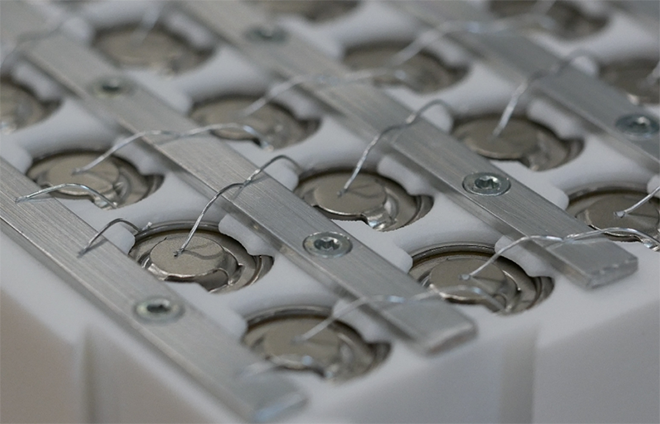Materials of busbars
Busbars are what connect the cells together in series. The question is from what conductive material (sheetmetal) to lasercut the busbars: Nickel, Copper or Aluminum?
Mechanically, busbars for the battery pack of EVs/HEVs must be durable, capable of withstanding high levels of vibration while simultaneously providing rigidity to keep the integrity of the battery module assembly.
Electrically, connections must handle high current coming from the cells but also increasing voltage levels as future cells will be up to 5.0V per cell. As a result, the impact on the clearance and creepage distance for the electrical insulation will be significant. The performance of the connections depends also upon the composite materials used to construct the busbars.
Nickel is not the ideal electrical conductor, and is historically used only because it is easy to robot spot-weld. When it comes to conducting high current, aluminum and copper are better options.
Copper has the best electrical conductivity, best thermal conductivity and lowest thermal expansion. But on the downside copper will oxidize very fast due to its exposure to air. (A layer of oxidation on bonding surfaces has a strong negative effect on the bonding quality and bondability)
Aluminum is over twice as conductive then Nickel, less sensitive to oxidation then copper, less costly and lighter in weight then copper. Aluminum is often the best overall choice, and copper would be our choice in packs were spaces are tight.

